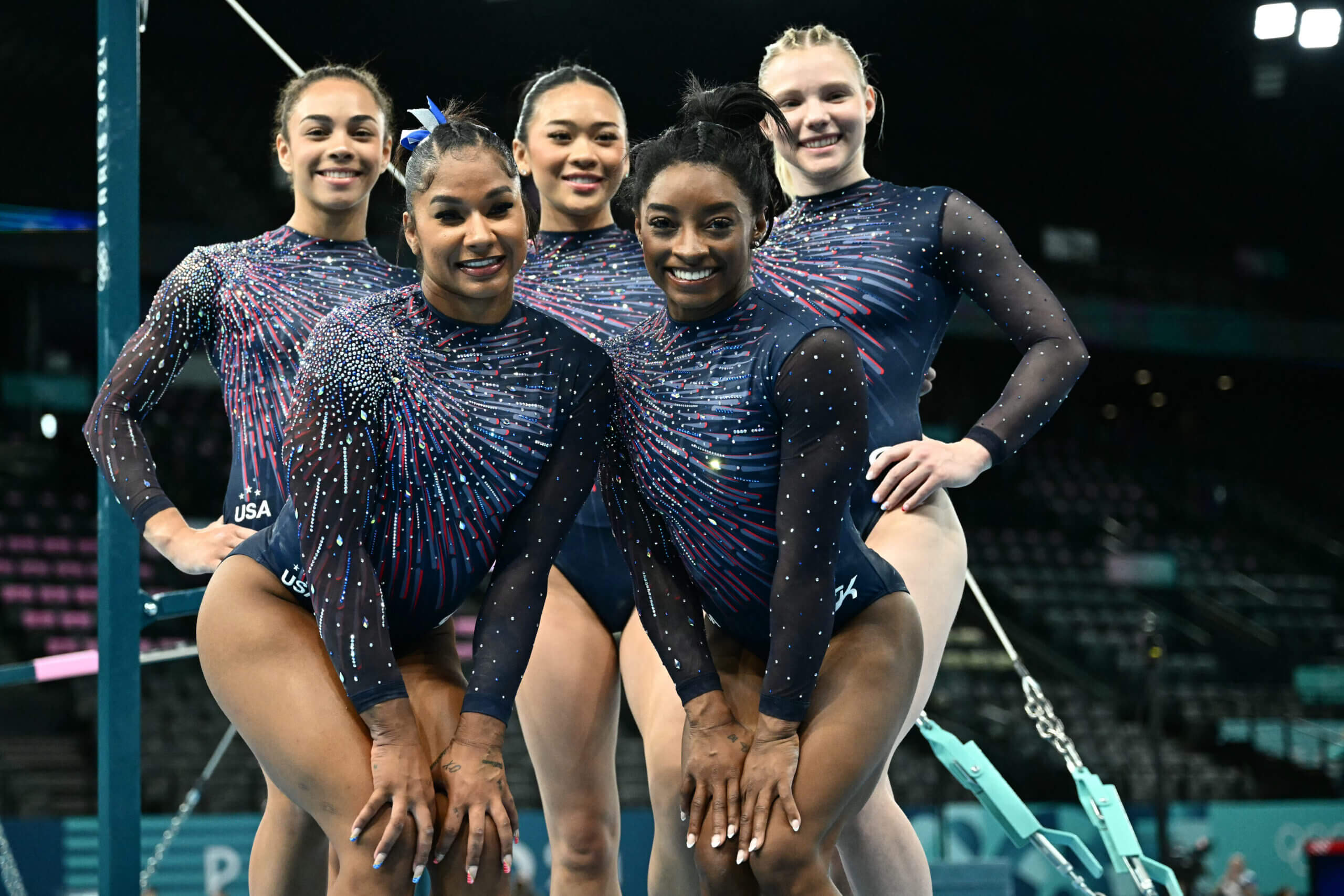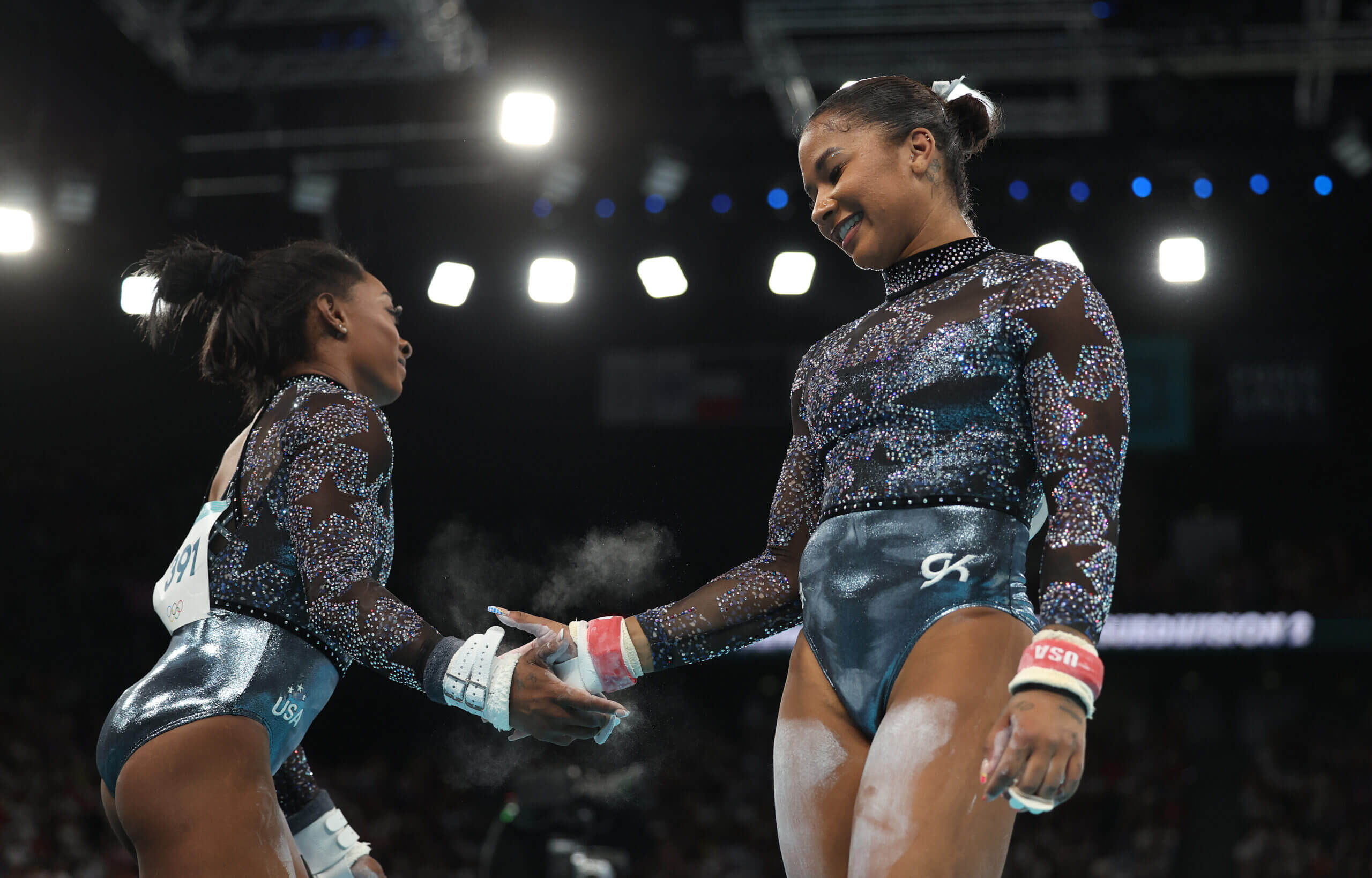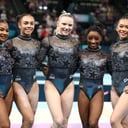
PARIS — On the morning of podium training, the U.S. women’s gymnastics team got its first glimpse of Bercy Arena. The building was empty save a few media members and workers, offering the women a perfect private introduction to its home for the Olympic Games. Before the team began its workouts, Simone Biles told Hezly Rivera to take a walk with her, onto the competition floor.
It was a simple suggestion packed with powerful meaning. Biles is a wise old 27-year-old in her third Olympics; Rivera a wide-eyed 16-year-old in her first.
“That was Simone saying, ‘I’ll go with you. I’ve got you,’” Chellsie Memmel, the team’s technical director, told The Athletic Monday morning. “That’s what I love about this team. They all have each other’s backs.”
Team is a funny concept in gymnastics. Like other individualized sports — tennis, swimming, track and field — wearing the red, white and blue often is about you. Would-be teammates are also opponents lining up on the blocks, standing across the net and, in this case, mounting an apparatus. Here in Paris, Sunisa Lee’s joy equated to Jordan Chiles’ sorrow. Lee edged Chiles by .067 in the qualifying all-around competition. She made the final. Chiles did not.
Gymnastics adds, unironically, a twist that the other sports do not: a team final. All in, all together, one goal. Two nights after they essentially competed against one another, five very different women — the buoyant Chiles, introverted Carey, thoughtful Lee, wide-eyed Rivera and the singular Biles — will be asked to come together to chase Olympic gold. That four of them, Biles, Chiles, Lee and Jade Carey are back for a do-over after settling for silver in Tokyo is both a rarity and an extraordinary asset. There is no motivation like redemption.
But Tokyo was a long time ago. A lot has happened since. Biles took a year off to focus on her mental health, and testified before the Senate Judiciary Committee about USA Gymnastics’ role in the Larry Nassar case. Lee took a spin on “Dancing With the Stars” and then spent a year battling two crippling kidney diseases. Chiles signed some marketing deals and bought her parents a house. Lee (Auburn), Chiles (UCLA) and Carey (Oregon State) went to college. Biles got married.
In the interim, world team rosters came and went, new blood replacing some of the old. Chiles and Carey were on the 2022 lineup. They were not part of the 2023 squad, but Biles was.
And then Shilese Jones and Skye Blakely suffered season-ending injuries at U.S. trials and suddenly the old gang found themselves back together again, for another run.
But Memmel, along with Alicia Sacramone Quinn, the team’s strategy lead, are smart enough to know that it’s not as simple as picking up where you left off. Managing personalities and people who are chasing very big goals isn’t easy; meshing them is even harder. Both former Olympians themselves, they’ve seen how a lack of chemistry can backfire.
“It can get chippy,” says Quinn, the team captain in 2008, “I’ve witnessed it. If there’s drama or girls being girls, you’ve got to nip that in the bud.”

Simone Biles and Jordan Chiles high five after Chiles’ uneven bar routine Sunday. “They all have each other’s backs,” team director Chellsie Memmel says. (Jamie Squire / Getty Images)
With so much at stake, they made team chemistry a priority. In Texas for training, they held team meetings, allowing the athletes to air any would-be grievances or worries (they had none), and organized a send-off dinner before leaving for Paris. But they also got out of the way. Forced team chemistry is an experiment gone bad. They knew, for this to feel like a team, the women would have to come to one another naturally and comfortably; that part of being a team was accepting that not everything had to be done all together.
In the Olympic Village, Memmel has watched as some of her athletes have gone off on walks (always in twos, since one of the team rules is to not go out and about alone) and others (Chiles, Rivera and Lee especially) have made goofy TikToks together.
“They’re choosing to do things together that have nothing to do with gymnastics,” she said. “That’s when you know it’s genuine.”
It may seem contrived, or even unnecessary. Ultimately they will hit each apparatus alone, and how they perform is entirely up to each individual. But Memmel counters that argument by pointing to a very specific moment in Sunday’s qualifications.
Carey, battling an illness that left her sapped of energy, struggled mightily on floor exercise, one of her strongest events. She fell completely out of her final tumbling pass, landing on her backside and entirely out of bounds. The 2020 gold medalist on that event, she instead scored a 10.633, the second lowest score in the entire competition on the floor, dooming her chance to defend her medal. As a distraught Carey headed off the floor, it was her teammates who swarmed her, bucking her up.
One rotation later, Carey nailed her vault, qualifying behind only Biles in that event.
“We saw it in real-time,” Memmel said. “That was teammates lifting up a teammate. That was having teammates that are truly invested in you as a person, showing that they want what’s best for you. That was a team.”

GO DEEPER
Biles, Chiles to lead U.S. gymnastics team in Olympic final
(Top photo of the U.S. women’s gymnastics team during Sunday’s qualification round: Loic Venance / AFP via Getty Images)